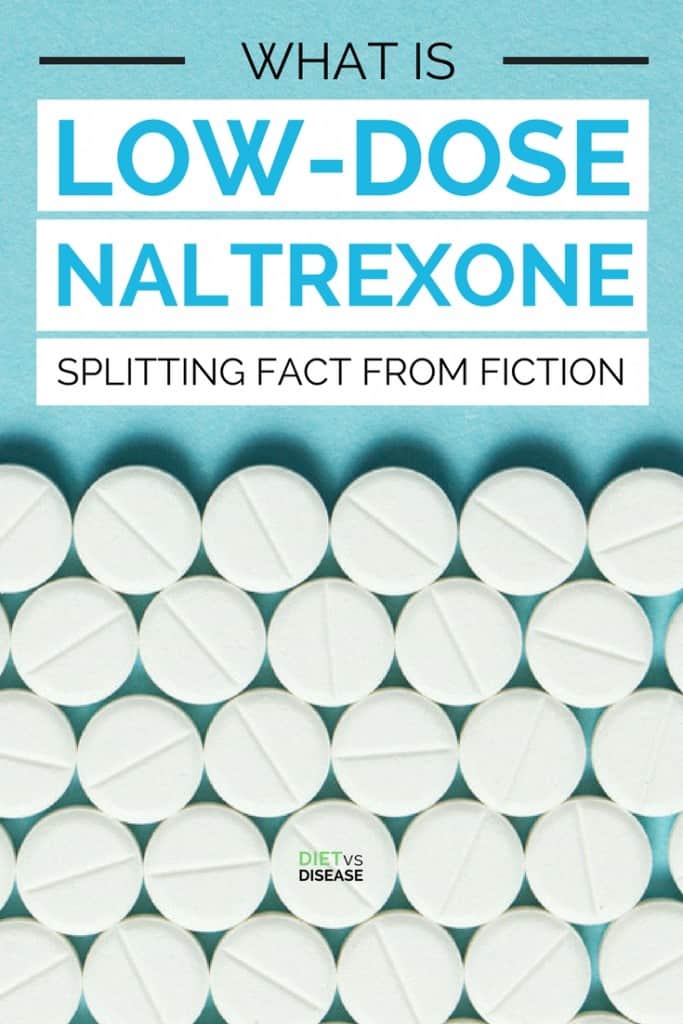Low Dose Naltrexone (LDN) is a small or microdose of the drug Naltrexone.
Over the past few years it has become very popular due to its supposed anti-inflammatory and anti-pain effects.
This article explains what LDN is, how it works and who could consider using it.
What is Low Dose Naltrexone and How Does It Work?
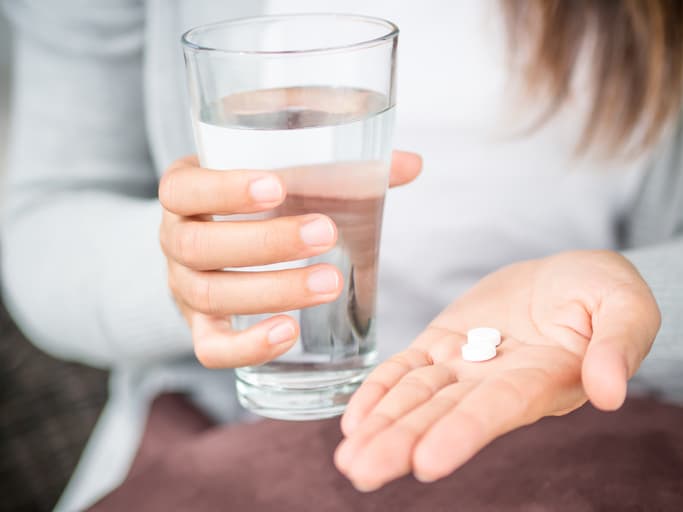
Naltrexone works by blocking the receptors that heroin and opiate drugs binds to.
Just like your body’s natural endorphins, this produces a “feel-good” and pain-blocking effect. This can be useful in those who suffer from chronic aches and pains, at least theoretically.
It was originally approved by the U.S. Food and Drug Administration (FDA) in 1984 to treat chronic opioid and alcohol dependence as well as drug detoxification.
Benefits of Microdosing
LDN is a microdose of the original Naltrexone drug, which typically has a daily dose of 50 to 100mg.
An LDN dosage, about 4.5mg, is roughly one-tenth of the typical amount to treat opioid addiction. Interestingly, an opposite effect of the drug is achieved at this smaller dose.
How Does LDN Work?
LDN works by improving inflammation and pain.
It’s hypothesized that LDN causes the body to increase its production of endorphins (chemicals that help promote feelings of euphoria), and also helps boost the immune system.
LDN improves inflammation by blocking the action of Toll-like receptor 4 (TLR4), a receptor found in white blood cells in the immune system. This action can also help lessen pain sensitivity.
Summary: LDN is about 1/10th the dose of Naltrexone, an FDA-approved drug to treat opioid addiction and drug detoxification. In microdoses, the drug creates an opposite effect by increasing the body’s production of endorphins, boosting the immune system and reducing pain sensitivity.
Who Should Consider Using LDN?
Many websites devoted to low dose naltrexone (LDN) rave about its widespread potential health benefits, but most state unsubstantiated claims.
Research looking into the role of LDN for specific conditions like Crohn’s disease (CD), fibromyalgia, multiple sclerosis (MS), Hashimoto’s hypothyroidism and weight loss is only in its early stages. Large-scale, well-designed trials are necessary for us to learn more about its potential effects.
Despite the lack of robust evidence, patients with these chronic conditions have been seeking out LDN in hopes of finding relief from their painful symptoms.
Crohn’s Disease
Crohn’s disease (CD) is a type of autoimmune inflammatory bowel disease (IBD) with gastrointestinal and full-body implications.
Numerous small-scale studies have been published on the use of LDN in CD. Overall, results are promising and no safety concerns have been reported.
The first study in 2007 evaluated 17 active CD patients using 4.5mg LDN, in addition to their standard treatment.
According to quality of life surveys, an impressive 89% showed a positive response to therapy, while 67% achieved disease remission. LDN was well-tolerated, though seven participants noted sleep disturbances (1).
A 2014 pilot study of 14 children with CD receiving placebo or 0.1mg/kg LDN for 8 weeks also reported positive findings. Of those treated with LDN, 25% achieved disease remission and 67% saw improvements in disease activity. The study concluded that LDN is likely safe and helpful for improving CD in children (2).
Furthermore, a randomized, double-blind, placebo-controlled study tested the safety and efficacy of LDN over 12 weeks. Out of 40 CD patients, 80% of those treated with LDN had at least a 70-point decline in their Crohn’s Disease Activity Index score compared to 40% of placebo patients. One-third of the LDN group also experienced disease remission (3).
In a recently published study of 256 Norwegians with IBD, researchers found that the use of LDN led to an overall reduction in other treatment drugs. Such findings imply that LDN may help reduce the number of drugs required for IBD treatment (4).
Summary: There is a lot of compelling evidence that low dose naltrexone can help with crohn’s disease treatement. It’s worth speaking to your doctor about this.
Fibromyalgia
Fibromyalgia is a chronic musculoskeletal pain condition that also causes fatigue, brain fog and sleeping issues.
The condition is challenging to treat because typical anti-inflammatory drugs don’t improve the symptoms. However, two small clinical trials have shown LDN to be an effective treatment.
In a 2009 trial, 10 women with fibromyalgia (not taking opioid medications) took 4.5mg LDN over 8 weeks.
Results showed a 30% improvement over placebo for reducing FM symptoms. Mechanical and heat pain thresholds also improved, with very minimal side effects reported (5).
A later study analyzed 31 women with fibromyalgia also using 4.5mg LDN. Researchers found that the treatment provided specific and clinically beneficial improvements for fibromyalgia pain (6).
Summary: Low dose naltrexone looks promising, but these are small studies.
Multiple Sclerosis
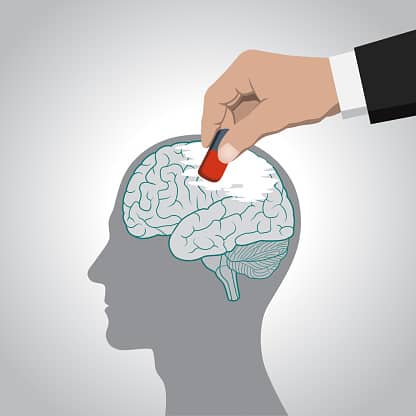
Multiple sclerosis (MS) is a chronic, disabling autoimmune condition impacting the central nervous system.
Symptoms range from mild to severe and include pain, numbness, muscle weakness and fatigue.
A 2008 pilot trial of LDN on 40 patients with primary progressive MS found a significant improvement in spasticity after 6 months. They concluded that LDN is safe and well-tolerated in this population (7).
In another trial, researchers looked at the effect of LDN on other drug treatments in 341 patients with MS. The quasi-experiment found that LDN use did not help reduce the use of other drug treatments (8).
However, a 2010 pilot study of 4.5mg LDN on 60 MS patients over 8 weeks reported significant improvements in mental health quality of life measures. LDN was well-tolerated and no adverse events occurred (9).
Overall, LDN has not shown any disease-modification effects in MS, just improvements in quality of life and pain reduction (10).
Summary: Research indicates low dose naltrexone could be useful for pain management in multiple sclerosis,
Low Dose Naltrexone and Hashimoto’s Hypothyroidism
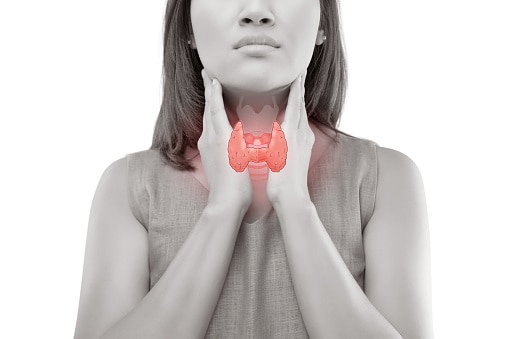
Hashimoto’s Disease is the most common form of hypothyroidism in Western countries.
It occurs when your immune system mistakenly attacks and damages the thyroid gland, resulting in an underactive thyroid and low thyroid hormone production.
Some alternative health practitioners recommend it for treating hypothyroidism, but research is sparse.
One study of 24 opioid addicts undergoing 50mg of naltrexone treatment (i.e. not low dose naltrexone) found some benefit. Total T3 and the ratio of T4 to T3 conversion improved with increased duration of the naltrexone treatment (11).
Additionally, some theorize that low dose naltrexone helps to normalize the immune system, which could help to improve thyroid antibodies in autoimmune-based thyroid conditions (12).
Again this is theoretical, there is not enough research to make any solid conclusions. If you are looking for weight loss advice with Hashimoto’s I recommend starting here.
Summary: Low dose naltrexone may help with Hashimoto’s disease, at least theoretically. There is hardly any evidence to go by unfortunately.
Low Dose Naltrexone and Weight Loss
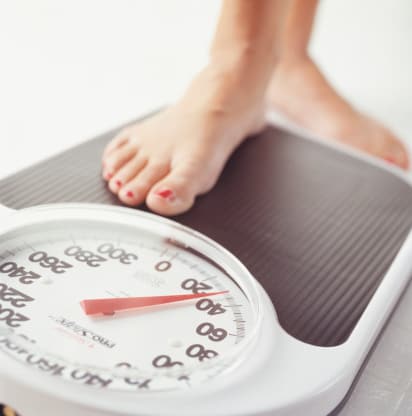
There are few rationales explaining why low dose naltrexone (LDN) may help with weight loss.
One idea explores the connection between LDN and appetite. If it helps to reduce appetite, then the theory is that one would consume less calories and therefore lose weight.
A study using 50mg of naltrexone showed that subjects ate less due to decreased palatability of food. However, this has not be replicated in lower-doses of naltrexone. Also, the study did not specifically report on weight change (13).
Another rationale is that LDN impacts insulin and growth-hormone. If it helps to reduce insulin secretions and improve growth-hormone levels, then it may help with weight loss.
A study explored this concept in typical naltrexone doses in 12 obese women and six lean women. It appears that naltrexone did help reduce the insulin response in obese women. However, the study did not use LDN nor did it actually report on its effect on weight change over time (14).
Other rationales include how it helps with sleep and inflammation and therefore weight management. No study designs use LDN and report outcomes specific to weight loss.
While it may be a promising area of research, it does not qualify as one of the 77 weight loss strategies that work.
Summary: Low dose naltrexone does not appear to help with weight loss. Lasting weight loss requires diet and lifestyle change.
Low Dose Naltrexone and Other Conditions
There are other populations starting to gain interest in low dose naltrexone treatment as well.
Those with chronic pain, cancer, depression, lichen planus (an. itchy, painful, scarring hair loss condition) and Hailey-Hailey disease (a rare skin disorder) are finding benefits from LDN (10, 15, 16, 17)
Click here to review a complete list of the current LDN literature for various patient populations.
Low Dose Naltrexone Side Effects
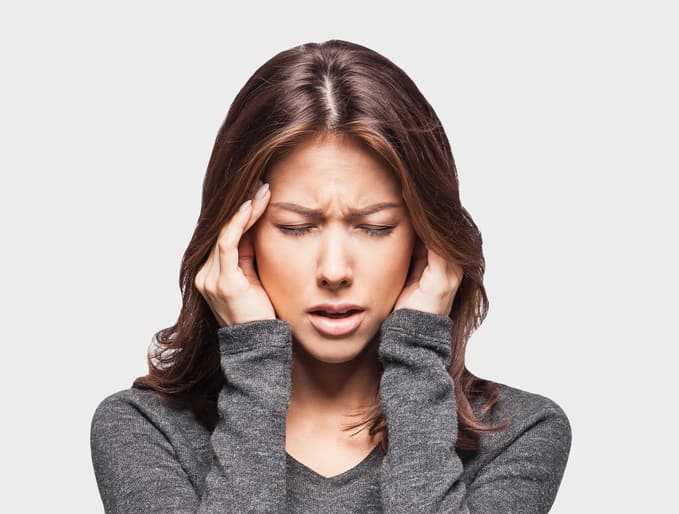
While there’s limited research on LDN, very few adverse effects have been reported so far.
Most commonly, vivid dreams and sometimes nightmares have been observed. Some patients have also reported an increase in headaches compared to placebo, but this hasn’t been statistically validated.
No withdrawal symptoms or interactions with other medications have been noted.
However, long-term safety is not known at this time. Larger and more varied sample sizes are necessary.
Summary: LDN appears to be relatively safe with limited adverse effects, including vivid dreams, nightmares and headaches. Long-term safety is not known.
How to Use It

Keep in mind that LDN is not FDA-approved for the treatment of any medical condition, so there are currently no standardized guidelines for its clinical use.
That doesn’t mean that people aren’t using it, though. Over 250 pharmacies in the U.S. alone have reported compounding LDN.
Because the 4.5mg dose is not available for prescription, many people end up splitting their 50mg tablets and creating their own at-home version. Be aware that this can lead to dosing variability.
It’s advised to take the product on an empty stomach starting with a loading phase of 1.5mg and slowly titrating to 4.5mg over a few days. Most take LDN at bedtime, but if it impairs sleep, some clinicians recommend taking it in the morning.
It can take at least one month and up to two months to start noticing benefits of LDN.
Summary: LDN is not FDA-approved at this time so there are no standard-use guidelines. However, many start with 1.5mg at night and titrate their dose to 4.5mg over a few days. Wait at least one month of use to experience its full effect.
Should You Try Low Dose Naltrexone?
LDN is a fairly safe way to help reduce inflammation and pain for numerous chronic medical conditions.
While the research on LDN appears promising for its efficacy and safety, it’s still in its early phases of study.
More comprehensive and larger-scale research is necessary before this treatment is widely recommended. Talk to your doctor about your interest in trying LDN for the treatment of crohn’s disease, Hashimoto’s hypothyroidism and other chronic pain conditions.
For those interested in weight loss, unfortunately it really doesn’t appear beneficial.
With more time, perhaps more benefits of low dose naltrexone will be discovered and more people will find some much needed relief.

